(2134 products available)















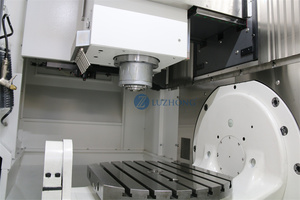























































































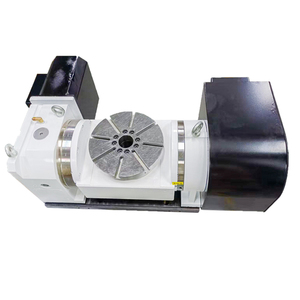

















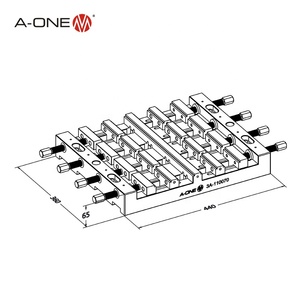















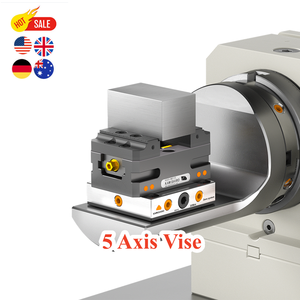


















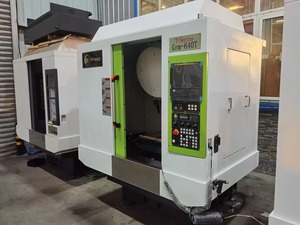


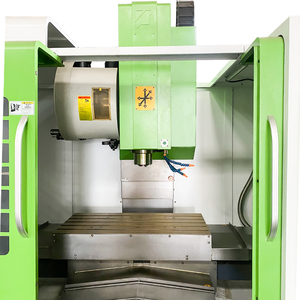











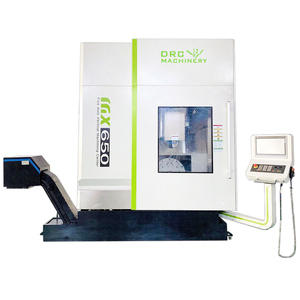


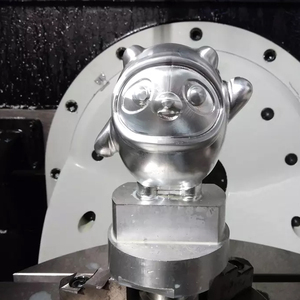

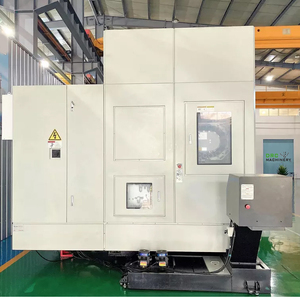












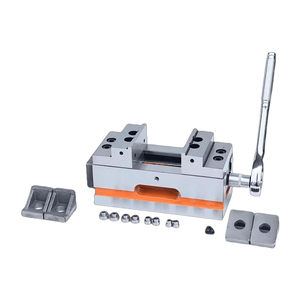













A 5-axis rotary table is a table that rotates around a vertical or horizontal axis in addition to the regular X, Y, and Z axes. This allows it to produce complex workpieces with multiple curved surfaces that are difficult to produce using a 3-axis machine alone. There are several types of 5-axis rotary table setup:
The trunnion table is a 5-axis rotary table that rotates around the X-axis. This configuration is common on vertical machining centers or other machines with the spindle in the fixed column. Trunnion tables are versatile and can be used to process multiple faces of a workpiece without repositioning it. This results in improved accuracy and reduced setup time.
A swivel head rotary table is a setup in which the A or C axis is attached to the machine's spindle head. The spindle head can tilt at an angle on the A axis or rotate on the C axis. This configuration is often found in 5-axis milling machines, where the spindle head can be rotated in two directions. Swivel head 5-axis machines allow for more complex machining operations and greater flexibility in tool positioning.
Some 5-axis machines use a combination of rotary and trunnion tables to achieve multi-axis movement. A trunnion table provides rotation around one axis, while a rotary table allows rotation around another orthogonal axis. The two tables are usually arranged in a perpendicular or T-shaped configuration. This setup is common in horizontal machining centers, where the workpiece can be rotated in two planes to allow the spindle to access all sides of the part. Rotary/trunnion combinations provide simultaneous 5-axis machining, resulting in increased productivity and improved part quality.
A dual rotary table is a setup in which two rotary tables are used to achieve 4-axis or 5-axis simultaneous machining. The workpiece is mounted on the two rotary tables, which can be rotated independently. This setup provides additional rotary motion beyond the standard 3-axis machine, allowing for more complex machining operations. Dual rotary tables are often used in horizontal machining centers to increase productivity and flexibility.
An indexer with a rotary table is a device that can position the workpiece in discrete steps using an indexer, while also providing continuous rotary motion with a rotary table. This setup combines the ability to index the workpiece at specific angles with the flexibility of full rotary motion. It allows for a combination of fixed and rotary positioning during machining operations. The indexer with rotary table provides a cost-effective solution for adding multi-axis capability to a 3-axis machine.
5-axis rotary tables possess an array of specifications that make them suitable for a variety of applications.
Precision: 5-axis rotary tables have precision levels that are measured in arc-seconds or arc-minutes. They have a low-level accuracy that allows them to rotate with high precision, which provides an increase in the machining and manufacturing accuracy of the machine.
Load capacity: They have a maximum load capacity that is determined by the torque rating of the unit. Typically, they can hold and support heavy workpieces. Their load capacity is also high, enabling them to handle and support loads of different weights.
Rotary axis travel: They have a rotary axis travel that is the rotary range or angular movement the table can achieve. The rotary axis travel of a 5-axis rotary table offers a range of motion that allows it to move precisely and smoothly about one or more axes.
Speed: They possess a speed that is how quickly it can rotate or move. It has a rapid speed that enables it to rotate and move swiftly, which helps in enhancing the efficiency of the machine.
5-axis rotary tables require regular maintenance to ensure they function properly and have a long service life.
Firstly, operators should clean the surface and components of the rotary table regularly. This will help prevent the accumulation of chips, dust, or debris, which can cause premature wear and damage. When cleaning, use non-corrosive solvents and soft cloths to avoid damaging the surfaces.
Secondly, they should lubricate the moving parts of the 5-axis rotary table. This will help enhance the smoothness of motion and reduce friction and wear. When lubricating, use appropriate lubricants and follow the manufacturer's recommendations.
Thirdly, they should inspect the rotary table components regularly. Check for signs of damage or wear, such as loose fasteners, worn bearings, or damaged belts. If necessary, repair or replace the damaged components as soon as possible to prevent further issues.
Finally, they should also perform calibration and alignment of the 5-axis rotary table periodically. This will help ensure the table maintains accurate positioning and motion. Also, ensure the machine is securely mounted and aligned to avoid any positioning errors.
5-axis CNC rotary tables are widely used in industries such as automotive, aerospace, medical, and manufacturing, which require complex machining processes that demand high precision and accuracy. Here are some specific application scenarios.
In the automotive industry, 5-axis rotary tables are often used in the production of engine components, steering system parts, suspension components, and other complex parts. The rotary table can position the workpiece at the optimal angle for machining without the need for re-fixturing, which improves efficiency. This system also ensures the accuracy and consistency of the parts.
In the aerospace industry, 5-axis rotary tables are suitable for machining turbine blades, aircraft fuselage, and other complex high-precision parts. These rotary tables work well with CNC machines, which allows for simultaneous milling and drilling operations. The 5-axis rotary table provides flexibility and accuracy in the manufacturing process, resulting in improved productivity and quality.
5-axis rotary tables are often used in prototype development and small-scale production. This system can be used to machine various material types, including plastics, aluminum, and titanium alloys. 5-axis rotary tables can quickly implement design changes and optimize the production process, making it an excellent choice for prototyping and iterative design. With the help of 5-axis rotary tables, manufacturers can quickly iterate on product designs and bring new products to market faster. They can also use this system to produce customized parts according to customer requirements.
In the medical industry, 5-axis rotary tables are often used in the production of prosthetics, orthopedic implants, and surgical instruments. These rotary tables can achieve complex geometries and tight tolerances required for medical devices. Their high accuracy and precision ensure the quality of medical equipment and promote the development of the medical industry.
5-axis rotary tables are often used in workshops and tooling for various manufacturing processes, such as milling, drilling, and cutting. These rotary tables can be integrated with different machine tools to enhance their capabilities. For example, when combined with a milling machine, the 5-axis rotary table allows for multi-sided machining of workpieces. When combined with a drilling machine, it enables precise hole placement and orientation.
When choosing a 5 axis rotary table, it is essential to consider the following factors:
Ensure that the 5-axis rotary table has a high level of precision and repeatability. This will allow the machine to produce consistent and accurate parts. Ideally, look for this in the rotary table's specifications. These include the backlash, positioning accuracy, and resolution. Backlash refers to the amount of play or slop in the rotary table. It impacts its ability to maintain accurate positioning. A lower backlash indicates a more precise rotary table. Positioning accuracy refers to the rotary table's ability to return to the same position consistently. Choose a rotary table with high positioning accuracy. Resolution is the smallest incremental movement the rotary table can make. A higher resolution allows for finer positioning control.
This refers to the maximum weight the rotary table can support while maintaining performance. The load capacity must be high enough to accommodate the workpiece and any fixtures. Exceeding the load capacity can result in decreased precision, accelerated wear, and even damage to the rotary table.
Ensure that the 5-axis rotary table is compatible with the existing CNC machine or any machine it will be attached to. It should match the machine's spindle and work envelope. This will ensure seamless integration and optimal performance.
Consider the control system of the 5-axis rotary table. Modern rotary tables offer different control options, such as manual, pneumatic, hydraulic, or fully integrated CNC control. Go for a fully integrated CNC-controlled rotary table. It provides precise positioning and seamless communication with the CNC machine.
Finally, consider the cost of the 5-axis rotary table. Rotary tables come in various sizes and designs, which affect their cost. Larger rotary tables with higher specifications tend to be more expensive. Set a budget and look for a rotary table that offers the required features at a reasonable cost.
Q1: What is the difference between 4-axis and 5-axis machining?
A1: The difference between 4-axis and 5-axis machining is that the 5-axis rotary table allows the workpiece to approach the cutting tool from five different directions instead of four. This additional capability enables more complex and precise machining operations. It also makes the process more versatile and efficient.
Q2: What are the benefits of using a 5-axis rotary table?
A2: The 5-axis rotary table offers several benefits. It can improve accuracy and surface finish by allowing the workpiece to be machined from multiple angles without repositioning. It enhances productivity by reducing setup time and enabling more operations to be performed in a single machine. The 5-axis rotary table also allows for the machining of complex geometries that would be difficult or impossible with lower-axis machines.
Q3: What industries can benefit from 5-axis machining?
A3: The 5-axis machining technology is widely used in industries such as aerospace, automotive, medical device, and mold making, all of which require high precision and complex part geometries.